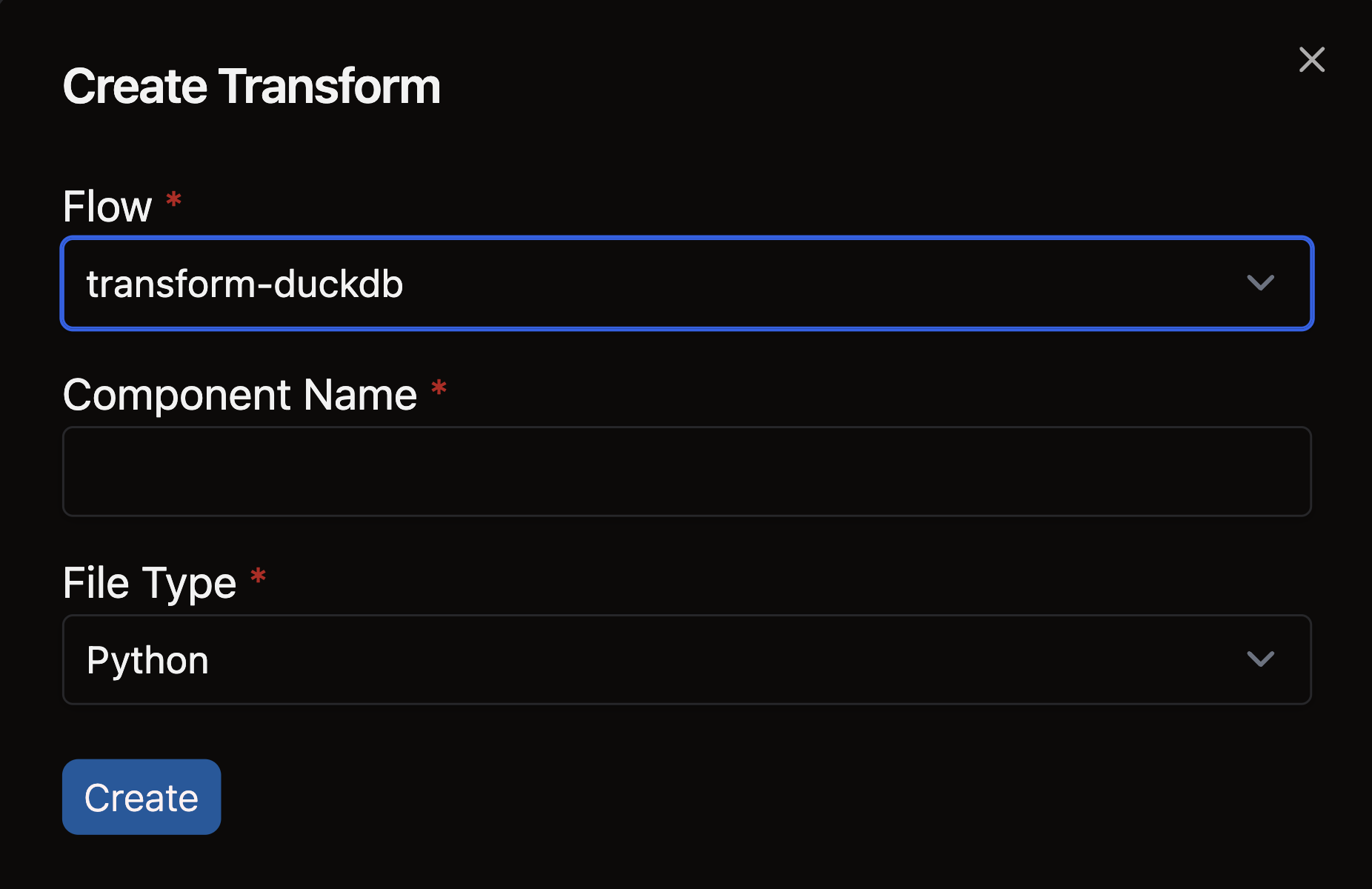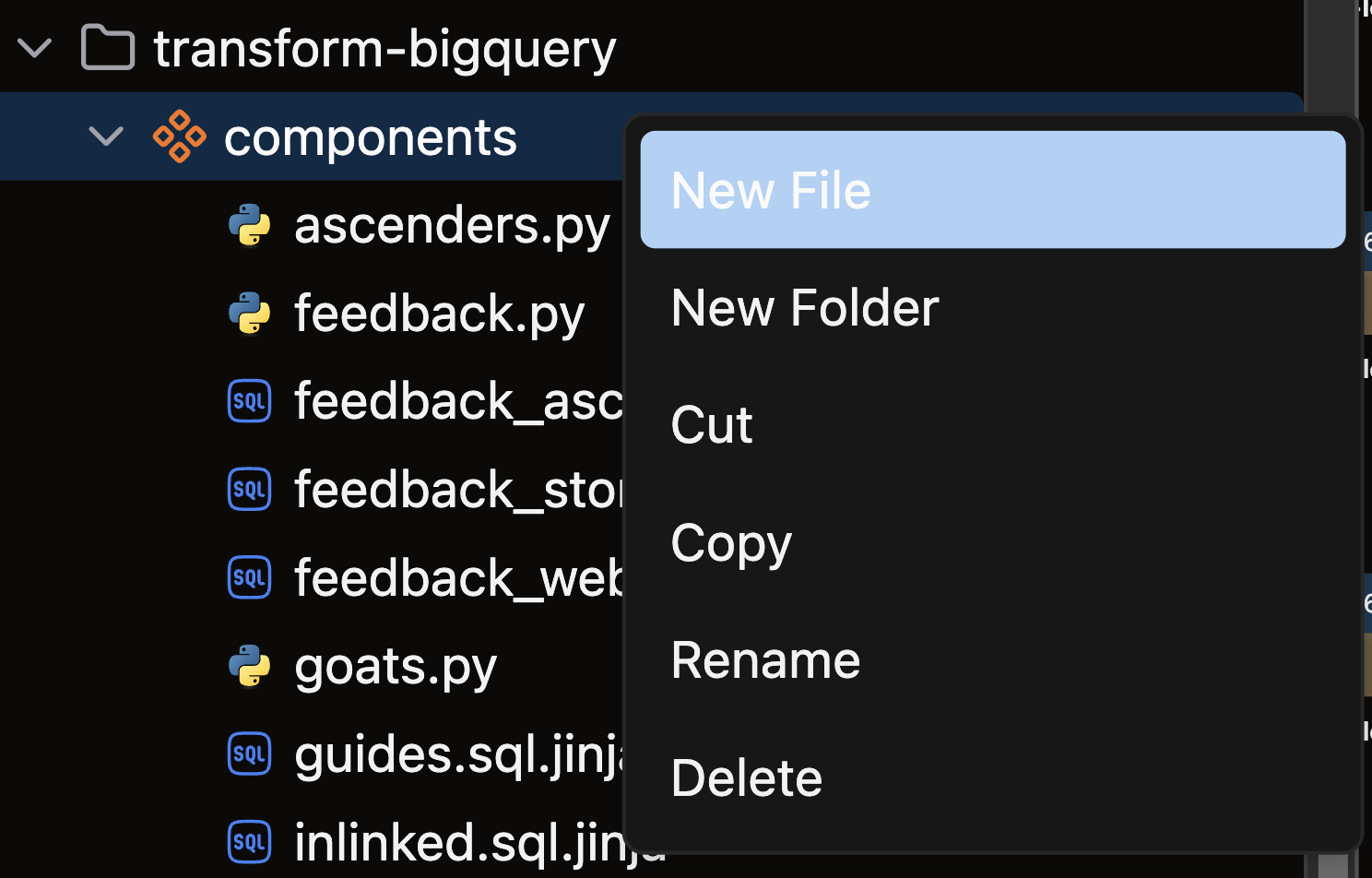Create a Smart Snowpark Transform
This guide shows you how to build a Smart Snowpark Transform that uses intelligent partitioning to process only relevant subsets of data, dramatically improving performance for queries based on partitioned fields.
Snowpark is Snowflake's developer framework that enables processing data directly where it's stored using familiar programming languages like Python.
Note that Snowpark is only available to Ascend Instances running on Snowflake. Check out our Quickstart to set up a Snowflake instance.
Prerequisites
- Ascend Flow
Create a Transform
You can create a Transform in two ways: through the form UI or directly in the Files panel.
- Using the Component Form
- Using the Files Panel
- Double-click the Flow where you want to add your Transform
- Right-click on an existing component (typically a Read component or another Transform) that will provide input data
- Select Create Downstream → Transform

- Complete the form with these details:
- Select your Flow
- Enter a descriptive name for your Transform (e.g.,
sales_aggregation) - Choose the appropriate file type for your Transform logic

- Open the files panel in the top left corner
- Navigate to and select your desired Flow
- Right-click on the components directory and choose New file

- Name your file with a descriptive name that reflects its purpose (e.g.,
sales_aggregation) - Choose the appropriate file extension based on your Transform type:
.pyfor Python Transforms.sqlfor SQL Transforms
Create your Smart Snowpark Transform
Follow these steps to create a Smart Snowpark Transform:
-
Import required packages:
- Ascend resources (
Snowpark,ref) - Snowpark objects (
DataFrame,Session)
- Ascend resources (
-
Apply the
@snowpark()decorator with smart settings:- Specify your
inputsusing refs - Add
reshape="map"to the input ref to enable Smart partitioning - Use
event_timefor time-series processing, such as smart backfills or time-range runs. - Include
cluster_byto optimize table setup, ideally aligning it with the partitioning strategy when columns match.
- Specify your
-
Define your transform function:
- Your function can access partitioning information through
context.partitioning - Implement your data processing logic
- Return a DataFrame with the processed data
- Your function can access partitioning information through
Adding the reshape="map" parameter to your input ref is what transforms a regular Snowpark Transform into a Smart Transform. It helps Ascend track which partitions (based on your cluster_by fields) contain which data.
Example
Here's an example of a Smart Snowpark Transform:
from snowflake.snowpark import DataFrame as SnowparkDataFrame
from ascend.resources import ref, snowpark
@snowpark(
inputs=[
ref("cab_rides", reshape="map"),
],
event_time="pickup_datetime",
cluster_by=["cab_type"],
)
def cab_rides_smart_map_snowpark(cab_rides: SnowparkDataFrame, context):
return cab_rides
Check out our reference guide for complete parameter options, advanced configurations, and additional examples.
🎉 Congratulations! You've successfully created a Smart Snowpark Transform in Ascend.